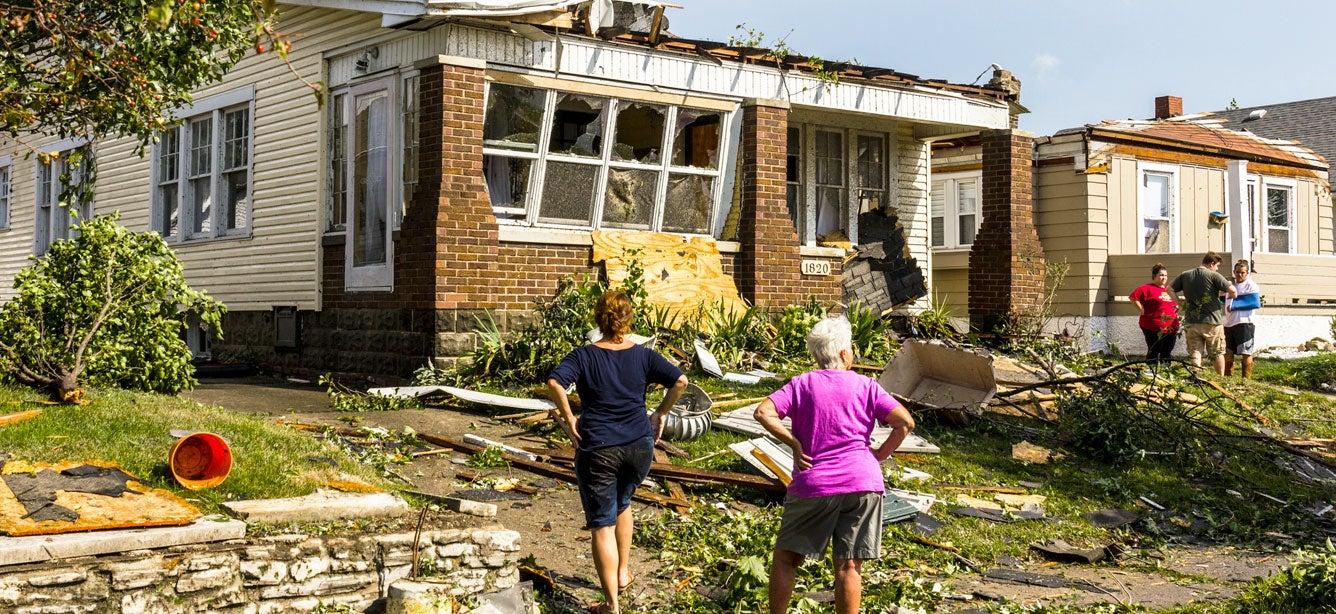
Related Topics
According to the National Alliance for Caregiving (NAC), more than one in five Americans—or 21 percent of the U.S. population—provides unpaid care for a family member.1 Of these, nearly 80% do so for an adult over the age of 50.2
While the types of assistance can differ, family caregivers typically help older adults with several instrumental activities of daily living (IADL), according to NAC, such as:
- Transportation
- Grocery shopping
- Housekeeping
- Preparing meals
- Managing money
- Giving medicines
“These are the types of tasks you might associate with successfully aging in place,” said Brandy Bauer, former Director of National Council on Aging (NCOA)’s MIPPA Resource Center. “And without a doubt, family caregivers play a crucial role in helping their older loved ones maintain a degree of independence they might not otherwise have.”
Still, juggling competing responsibilities isn’t easy. That’s where home-delivered meals for seniors can be helpful—both for caregivers, and for the family members who receive them.
Programs like these offer caregivers some respite while providing the peace-of-mind of knowing that their loved one is still going to eat at least one nutritious meal every day,” Bauer said.
“And home delivery provides an additional point of social contact for older adults, which is an important part of aging well,” she continued.
This guide will help you learn more about home-delivered meals, program eligibility requirements and costs, and how to find and set up a local program for yourself or a loved one.
Isn’t this senior Meals on Wheels?
Yes and no. Meals on Wheels is perhaps one of the most widely recognized names in home-delivered meals, especially for housebound older adults. It’s also one of thousands of other organizations nationwide who partner with the Administration for Community Living (ACL) to implement the Home-Delivered Nutrition Program, a provision of the Older Americans Act (OAA).
First established in 19783 to promote the health and well-being of older adults, the Home-Delivered Nutrition Program provides grant funding to Meals on Wheels and similar providers who plan, prepare, and provide free or low-cost meals for seniors over the age of 60 who are at risk of losing their independence. According to the ACL, 5,000 partner organizations serve as many as 900,000 of these meals each day. And the positive impacts are significant: 89 percent of recipients report that these meals have helped them maintain their autonomy.4
What are the program eligibility requirements for home-delivered meals?
In general, individuals who wish to receive services funded by the Home-Delivered Nutrition Program must be 60 or older. Certain other people also may qualify, including:
- Participants’ spouses, regardless of their age
- Volunteers who provide services during mealtimes
- Individuals with disabilities who live with a participating older adult
While there are no federally mandated income requirements, these nutrition programs are intended to serve people in greatest social and economic need. This means that many older adults who already receive Supplemental Nutrition Assistance Program (SNAP) benefits or other food assistance can also participate in programs that bring meals directly to their doorsteps, according to Bauer.
Because each individual state administers its own Home-Delivered Nutrition Program services, be sure to check with your nearest agency on aging or other partner entity to learn about additional program requirements and determine eligibility. (More on how to do this below).
Are these home-delivered meals free for older adults?
Most ACL implementation partners are nonprofit organizations who rely on Older Americans Act (OAA) grants to partially fund their work. State and local governments, private foundations, internal fundraising activities, and in-kind donations further support the direct and indirect costs of providing home-delivered meals.
For this reason, most OAA nutrition program partners provide meals at very low or no cost—though they may request that recipients donate what they can. Meals on Wheels, for example, may charge a sliding fee for meals that ranges from no cost to full price, depending on someone’s individual circumstances. But neither will they turn an eligible senior away.
Bauer advised that some state and local entities do contract with for-profit companies such as Mom’s Meals to provide Home-Delivered Nutrition Program services. If this is the case where you live, it’s important that you work with your ACL-authorized state agency to set up meal delivery rather than doing it directly through the company. This ensures that you won’t incur any unexpected fees. Otherwise, you may be on the hook for costs that aren’t covered by Medicare Advantage, which is how some of these companies suggest that you can pay for services (more on this below).
Does Medicare cover meal delivery?
No. Original Medicare—the federal health insurance program known as Medicare Part A and Medicare Part B—does not cover the cost of home-delivered meals or delivered groceries for older adults.
Some private Medicare Advantage plans may offer meal benefits, said Bauer, but it’s important to check plan requirements to understand what restrictions may apply.
Typically, this coverage is limited to very specific situations, and a doctor needs to recommend meal delivery as being medically appropriate before any benefits kick in,” Bauer said.
How can I get home-delivered meals for my loved one?
Use the ACL’s Eldercare Locator to find your local Agency on Aging. You can search online by ZIP code, or call their toll-free hotline at 800-677-1116.
How can I learn more about home-delivered meals and other nutrition benefits for older adults?
Visit NCOA’s Food Assistance for Older Adults resource page, where you’ll find a wealth of information and guidance.
Do you offer additional support for unpaid caregivers?
Yes. Be sure to bookmark NCOA’s Caregivers page for easy reference. You’re not alone.
Sources
1. Caregiving in the U.S. 2020, The National Alliance for Caregiving. Found on the internet at https://www.caregiving.org/caregiving-in-the-us-2020/
2. Caregiving in the U.S. 2020: A Focused Look at Family Caregivers of Adults Age 50+, the National Alliance for Caregiving. Found on the internet at https://www.caregiving.org/wp-content/uploads/2021/05/AARP1340_RR_Caregiving50Plus_508.pdf
3. Administration for Community Living. Older Americans Act Nutrition Programs. Found on the Internet at https://acl.gov/sites/default/files/news%202017-03/OAA-Nutrition_Programs_Fact_Sheet.pdf
4. Nutrition Services, Administration for Community Living. Found on the internet at https://acl.gov/programs/health-wellness/nutrition-services




